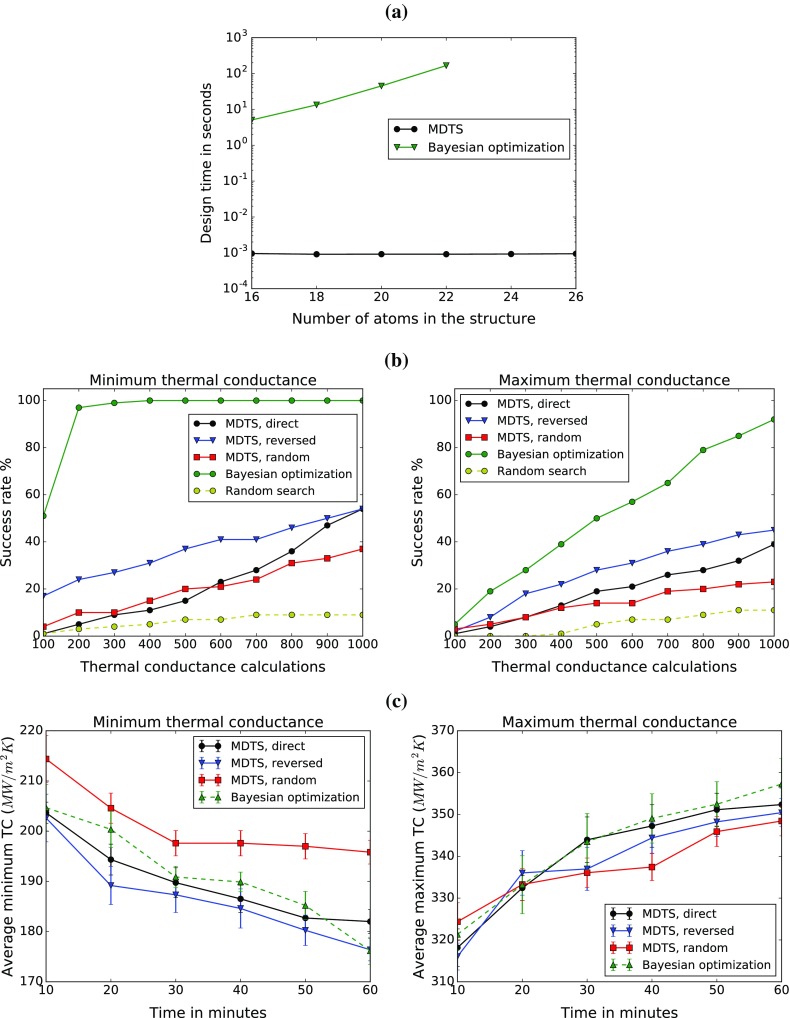Figure 4.
Comparison between MDTS and Bayesian optimization (BO) in finding the structure with minimum and maximum thermal conductance. (a) Design time for choosing a candidate structure against the number of atoms in the interfacial structure N. The time for BO grows exponentially as N increases. Results averaged over 10 runs, each for 30 solutions. (b) The fraction of optimal structure discovery (i.e. success rate) for both minimum and maximum thermal conductance in 100 runs against the number of thermal conductance calculations. The number of atoms is 16 ( ). BO takes fewer calculations to find the optimal structure. (c) Optimal observed thermal conductance (minimum and maximum) against total computational time including both design and simulation time (
). BO takes fewer calculations to find the optimal structure. (c) Optimal observed thermal conductance (minimum and maximum) against total computational time including both design and simulation time ( ). The result is averaged over 10 runs. Here, the efficiency of the two methods is comparable. For
). The result is averaged over 10 runs. Here, the efficiency of the two methods is comparable. For  , BO was more efficient and MDTS was more efficient for
, BO was more efficient and MDTS was more efficient for  .
.

